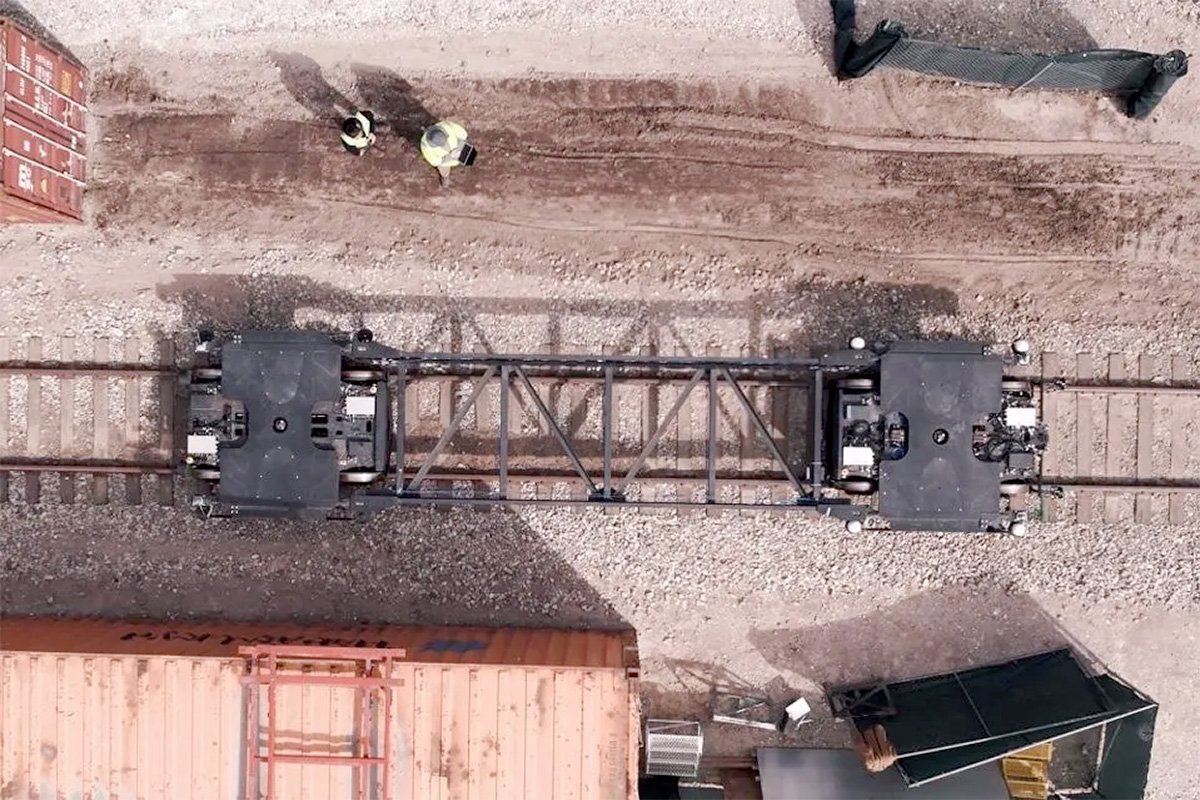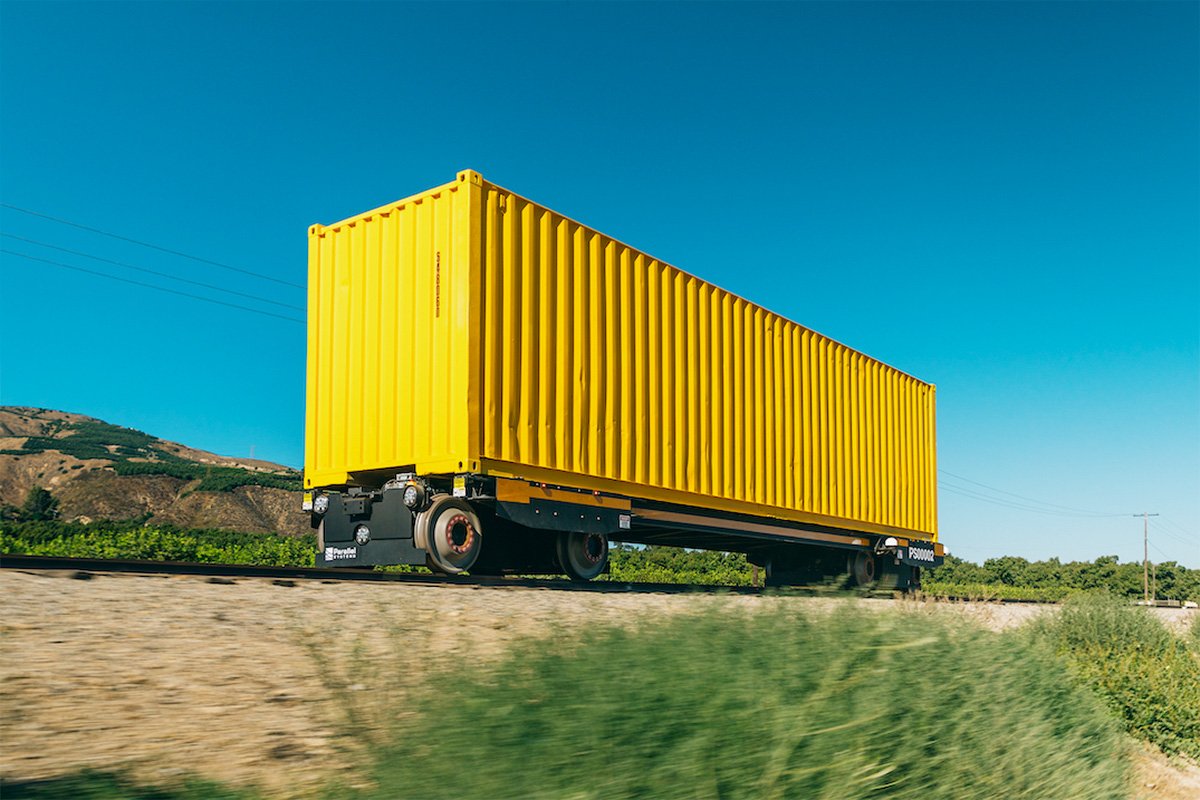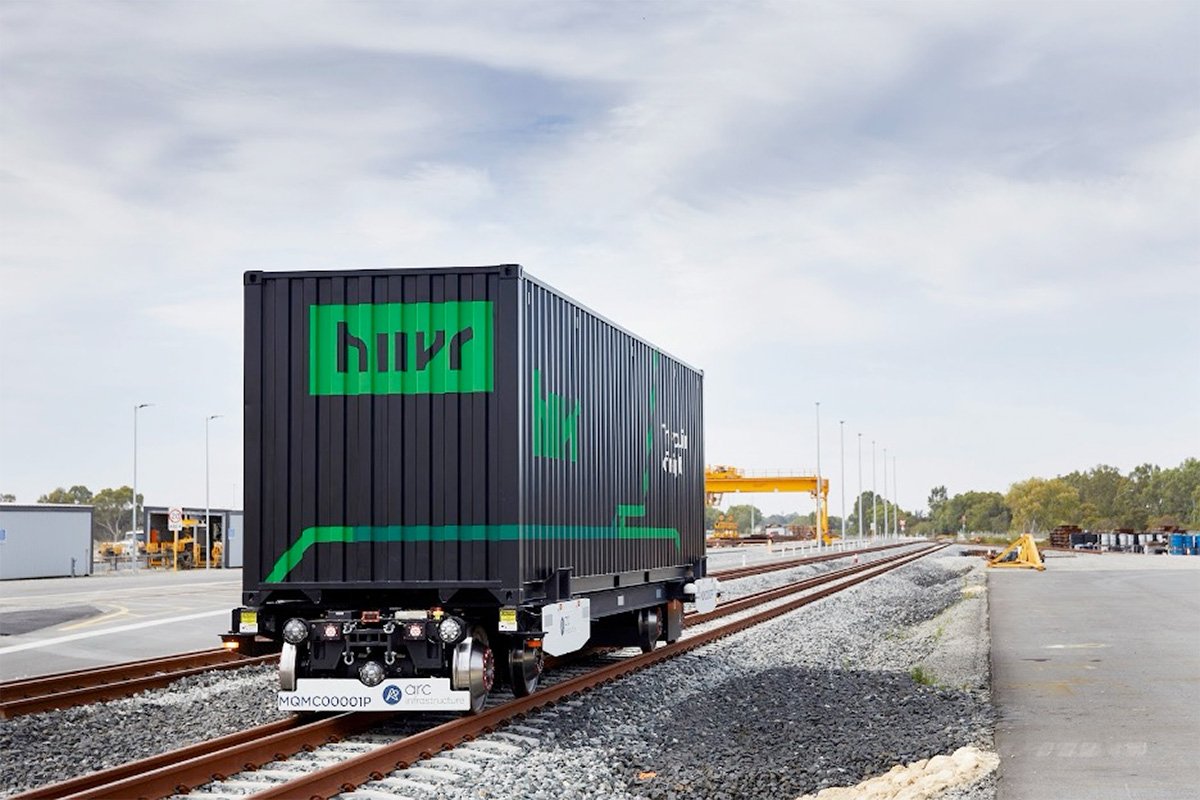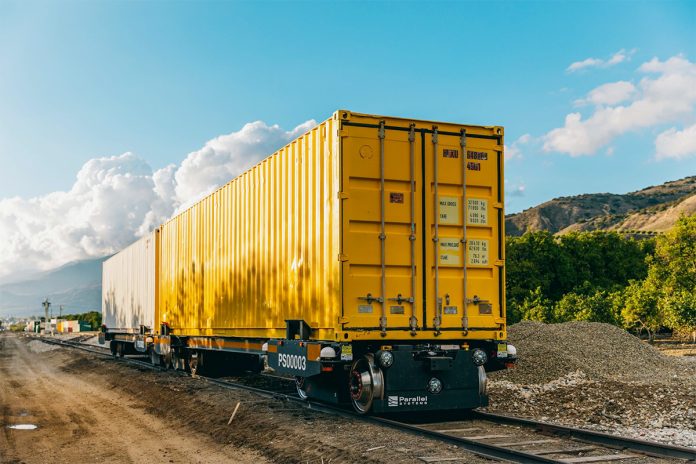In an ambitious step towards sustainable transportation, Los Angeles-based startup Parallel Systems is developing autonomous-electric freight rail vehicles that could revolutionize the freight industry. Founded in 2020 by former SpaceX engineers, the company aims to provide cleaner freight transportation solutions while addressing the ongoing commercial truck driver shortage. The second generation of their vehicles was recently introduced, showcasing innovations that could potentially shift a significant portion of freight transport from roads to rails.
What makes Parallel Systems unique?
Unlike traditional freight trains, Parallel Systems’ rail cars do not require a locomotive, caboose, or even an engineer. Instead, each rail car is self-powered and capable of independently carrying a shipping container with a maximum payload of 70,000 pounds. These autonomous-electric freight rail vehicles are designed to travel along the existing rail network, transporting goods from ports to inland destinations over distances ranging from a few miles to several hundred miles—routes traditionally handled by trucks.
The rail cars operate in groups called “platoons,” with up to 50 cars forming a single platoon through an automated process. Unlike conventional trains, these cars do not physically couple together. Instead, they move in close proximity, maintaining contact through bumpers that reduce aerodynamic drag, thereby improving energy efficiency. This innovative approach allows the battery-powered vehicles to travel approximately 500 miles between charges.
Addressing environmental and logistical challenges
One of Parallel Systems’ primary objectives is to shift a significant portion of freight transportation from roads to rails, thereby reducing reliance on internal combustion engine-powered trucks. According to Matt Soule, co-founder and CEO of Parallel Systems, the company aims to convert tens of billions of trucking miles to rail. This shift could have substantial environmental benefits; for example, converting 100,000 trucking miles to these autonomous-electric freight rail vehicles could eliminate up to 175 tons of carbon dioxide from the atmosphere.

Soule emphasizes that the goal is not to replace traditional freight trains but to complement them by offering railroads the tools to attract more trucking activity. This modal shift could help alleviate the commercial truck driver shortage while providing a more energy-efficient freight transportation alternative. As Soule points out, rail is a highly energy-efficient mode of transportation that has been largely overlooked in global efforts to decarbonize.
Advancements in safety and compatibility
The second generation of Parallel’s rail cars features a more advanced design, including a platform to assess track worthiness and compatibility with the general rail system. This compatibility is crucial to ensure that these autonomous-electric freight rail vehicles can operate safely alongside conventional freight trains. Equipped with sensors, on-board radios, and computers, these vehicles communicate with a railroad’s central office to prevent interference with existing rail traffic and minimize potential hazards.
Parallel Systems has also developed a braking system that enhances safety by allowing the rail cars to stop much more quickly than traditional freight trains. According to Soule, their system can bring a train to a halt in one-tenth of the distance required by conventional trains, thanks to its reduced latency and improved controllability.

Current testing and future prospects
Since November 2022, Parallel Systems has been conducting extensive testing of its second-generation vehicles at its Southern California test track. These tests focus on control, telemetry, traction, brake systems, and overall dynamics. Additional track-worthiness testing is scheduled for 2024 in Pueblo, Colorado, in collaboration with a wholly-owned subsidiary of the Association of American Railroads. The duration of the testing phase remains uncertain, as the company aims to gather sufficient data to refine the vehicles before offering them to railroads as an enhancement to their existing freight systems.
Parallel Systems has already produced three second-generation vehicles, with three more currently in production. Looking ahead, the company plans to expand its testing efforts, including a test in Georgia, which is intended to further evaluate the technology’s performance rather than initiate full-scale service.
Financial support and technological innovation
Parallel Systems has received substantial financial support to develop its technology, including a grant of over $4.4 million from the U.S. Department of Energy’s Advanced Research Projects Agency-Energy (ARPA-E). This funding is being utilized to support the development, production, and testing of the second-generation autonomous-electric freight rail vehicles.

The company has leveraged existing technologies from the automotive industry to develop its autonomous and electric power systems. By repurposing technologies designed for self-driving and electric cars, Parallel Systems aims to create a more sustainable and efficient rail freight solution. This approach allows the company to capitalize on the advancements already made in the automotive sector while adapting them to meet the specific needs of rail transportation.
The road ahead
While Parallel Systems is still in the testing and development phase, the potential impact of its technology on the freight industry is significant. By providing a viable alternative to truck-based freight transportation, the company could help reduce carbon emissions, decrease traffic congestion, and address the commercial truck driver shortage.
However, the success of this initiative will depend on several factors, including the ability to integrate the new rail vehicles seamlessly into the existing rail network, the cost and scalability of the technology, and the willingness of railroads and shippers to adopt this new mode of transportation.
Source: Parallel Systems



